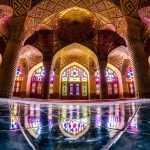Architect Minnette de Silva
Minnette de Silva, Sri Lanka’s first woman architect, left a lasting legacy with her pioneering design that combined tradition and modernism.
Minnette de Silva was an internationally recognised architect, considered the pioneer of the modern architectural style in Sri Lanka. De Silva was a fellow of the Sri Lanka Institute of Architects.
De Silva was the first Sri Lankan woman to be trained as an architect and the first Asian woman to be elected an associate of the Royal Institute of British Architects (RIBA) in 1948. She was also the first Asian representative of CIAM in 1947 and was one of the founding members of the Architectural publication Marg. Later in her life, she was awarded the SLIA Gold Medal for her contribution to Architecture in particular her pioneering work developing a ‘regional modernism for the tropics’.
Minnette de Silva was born on 1 February 1918 in Kandy to a well-known mixed-race family. Her father was George E. de Silva, a prominent Kandyan politician with a legacy of nearly thirty years. He was a Sinhalese Buddhist and was President of the Ceylon National Congress, and also served as a Minister of Health. Her mother, Agnes de Silva (née Nell), was a Burgher Christian who actively campaigned for universal suffrage in Sri Lanka. de Silva also recounts that her mother’s involvement in the Arts and Crafts Movement gave her exposure to various traditions that are reflected in her later work as an architect. She was the youngest of five children.
She was not able to train as an architect in Colombo, so she had to persuade her father and her maternal uncle Dr Andreas Nell to allow her to travel to Bombay to train at the Sir Jamsetjee Jeejebhoy School of Art. During the time of political upheaval in India, she attended a Free Gandhi March and as a result, was expelled for not writing an apology to the head of the School. She then started working as the apprentice assistant to the émigré architect and planner Otto Koenigsberger in his office in Bangalore working on prefabricated housing for the Tata Steel City plan in Bihar. She was there for approximately seven months.
During a brief visit to Ceylon, de Silva met Herwald Ramsbotham, the Governor-General of Ceylon, who took a keen interest in her situation and personally intervened in his capacity as head of the Education Committee in the UK and managed to arrange a place for her at the Architectural Association to allow her to take a special Royal Institute of British Architects examination for returning students for the War. de Silva was also the delegate representing India-Ceylon in the Congrès Internationaux D’Architecture Moderne (CIAM) from 1946 to 1957. It was here where she met Le Corbusier whom she maintained a long friendship with.
De Silva returned to Sri Lanka in 1949 at the insistence of her father, who requested her to make her contribution to the newly independent country. She returned to her parent’s home, St. George’s, where she would start her architectural career without any money of her own. Although her parents would have liked her to take a reliable salaried position, she stayed in Kandy and pursued her career independently, as she had her roots there and it was the cultural and traditional centre of the nation. This was important to her as she had been brought up in an atmosphere of the patriotic political and cultural commitments of her parents to the community and the country.
de Silva who as a child lived and moved among Kandyan artists and craftsmen would be taken by her parents to see the ancient Sinhalese architecture of the Anuradhapura and Polonnaruwa periods. Like her parents, she was greatly influenced by Ananda Coomaraswamy, who advocated for the preservation of the traditional arts and crafts, local craftsmen and the building methods and materials, and would be one of the first Sri Lankan architects to become a patron of the local craftsmen. She would develop her own style of architecture which is still apparent in the Sri Lankan architecture of today, and would be one of the first architects to incorporate building knowledge acquired in the West with that of Sri Lanka and India.
Her first building would be the Karunaratne House in Kandy. The 1949 commission came from friends of her parents Algy, who was a lawyer, and Letty Karunaratne, who asked her to build a house for Rs 40,000. She prepared plans for a split-level house for a site on a hill, the first of a kind in Kandy. It was the first building designed by a woman in Sri Lanka and attracted much attention and controversy. She had to tackle many problems early on as a result of being the first and only woman architect in Sri Lanka.
The fact that she worked independently in a male-dominated sector, without a male partner nor an established firm, rendered her distrust of contractors, businesses, the government and architectural patrons. After completing the Karunaratne house in 1951, the rest of the 1950s would be de Silva’s busiest decade throughout her career. In 1982 de Silva settled down to work at the Kandy Art Association and Centenary Culture Centre in her hometown.
The centre was designed with many levelled Kandyan flat tiled roofs and symbiotic indigenous features, thorana (gateways), midulas (open courts), mandapas (pavilions), rangahala (space for dance and music), avanhala (refectory). The centre was designed as a large interactive space where a number of activities could take place with a strong symbiotic relationship between architecture and entertainment. The excavated area to the rear formed a natural amphitheatre, and the 150-year-old building adjoining the site became a focus of the new design. A Kandyan village setting with trees and plants was a pleasing foil to the Temple of the Tooth and the Malwatta Vihara (residence of the high priest of the sect).
De Silva willed the Art Centre to be the most characteristic and living illustration in the region of contemporary Kandyan Architecture. Minnette de Silva died on 24 November 1998 at the age of 80.
Image and text via various internet sources.
Featured Image: Courtesy www.gagosian.com




GIPHY App Key not set. Please check settings